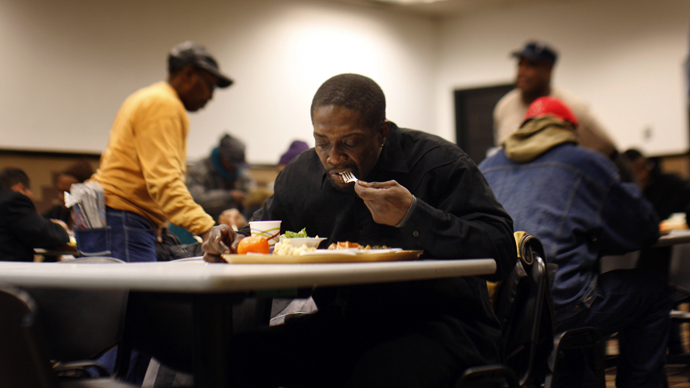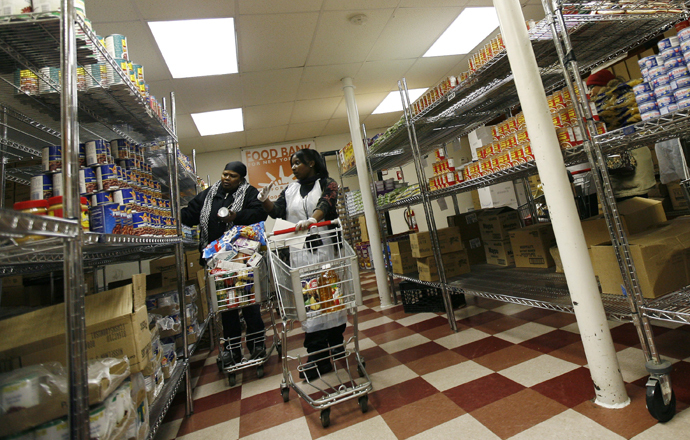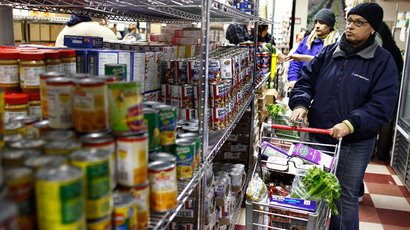The cupboard is bare: NYC food banks running out of stock

More than a third of New York State’s food pantries have had to turn away people in need because they have run out of supplies. Food banks have been demanding an additional $16 million to replenish their stock.
An estimated 1.4 million NY state citizens rely on food banks. According to the Food Bank for New York City, about 2.6 million people (out of a total population of 8.5 million), have trouble affording food throughout NYC.
About 37 percent of all food banks across the state have run out of food due to rising needs and falling benefits, the New York Times reported last week.
Reporter to the Daily Sheeple, Joshua Krause, notes: “Despite the media’s claims that we’re no longer in a recession, millions of Americans are still struggling to make ends meet.”

Krause believes that America has developed a “permanent underclass” of citizens that are simply unable to rise above their poverty. This means that whatever happens to the stock exchange or home prices, the wealth never filters down to those people destined to live in extreme poverty.
“If you’re looking for proof that this permanent underclass exists, look no further than the massive number of people who still rely on food stamps and food pantries to survive,” Krause said.
The Associated Press cited Michael Berg, the director of an organization that runs three food pantries in New York, who said the demand for food there has been rising by some 20 percent every year.
The number who have to make the difficult choice between eating and paying for other necessities such as rent, medication, childcare and transportation spiked in 2013, when Congress cut funding for the Supplemental Nutrition Assistance Program.
READ MORE: NY food banks seek $16 million in state funding to restock their barren shelves
Financing of this program, formerly known as the food stamp program, was reduced to an average of $18 per person a month. The number of those in need has been growing ever since.
Approximately 40 percent of food stamp beneficiaries were forced to turn to emergency food services, thus creating additional demand, the New York Times reported.
With many of these locations running short on food, the state legislature has been asked to allocate an extra $16 million in funding in order to keep the pantries’ shelves full through to the end of this year.
What’s particularly remarkable about food bank applicants is that many of them are neither homeless nor jobless. However, they are not paid enough to pay rent and put food on the table.
New York food banks are now falling short to the tune of some 100 million meals a year.













